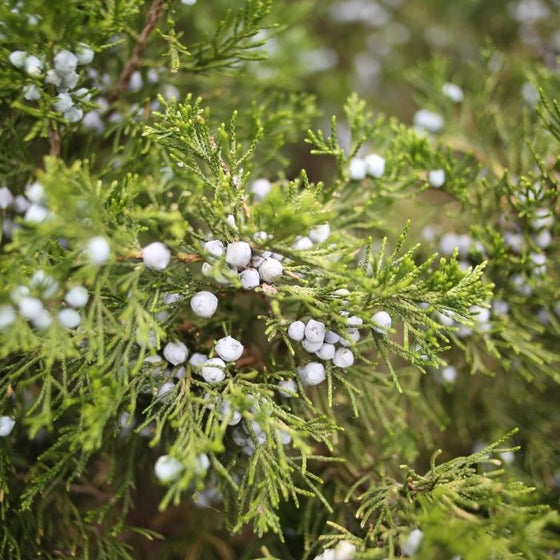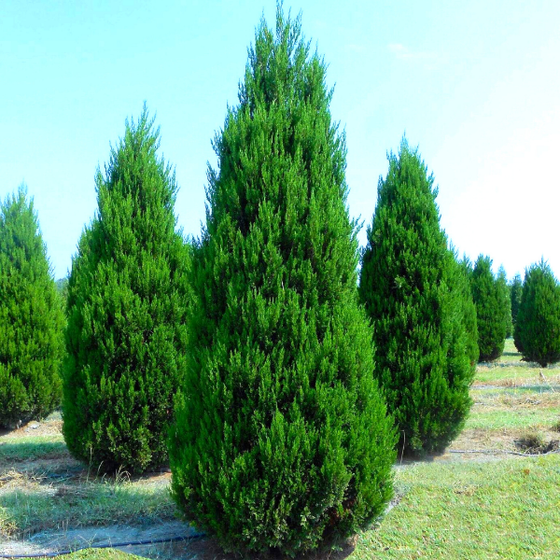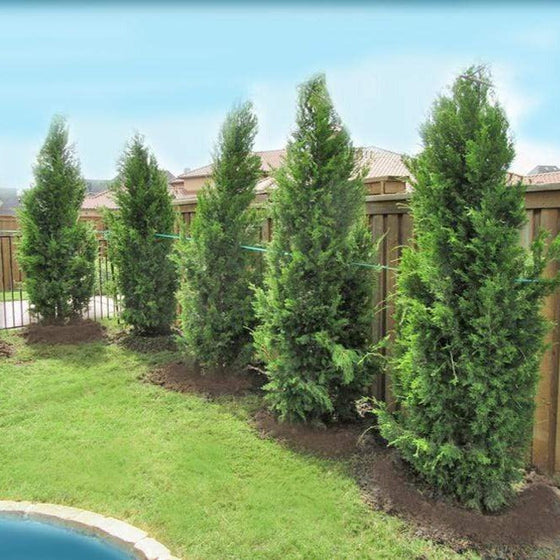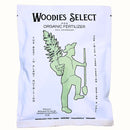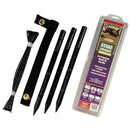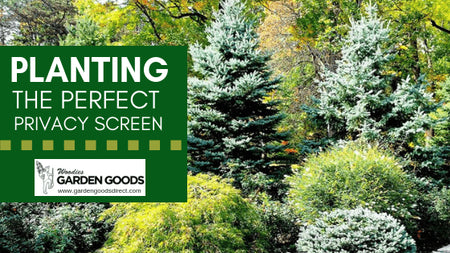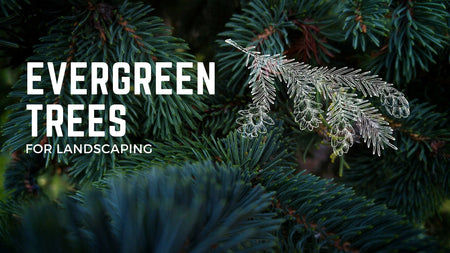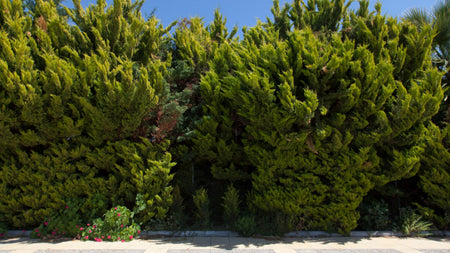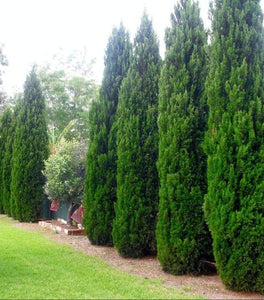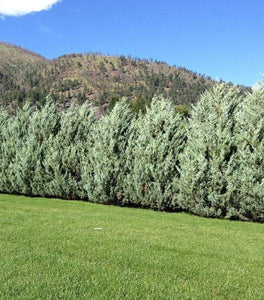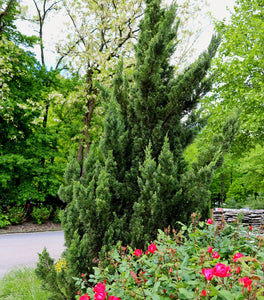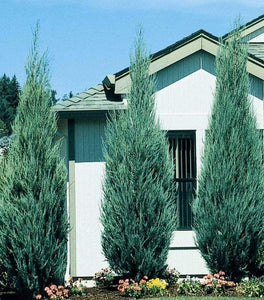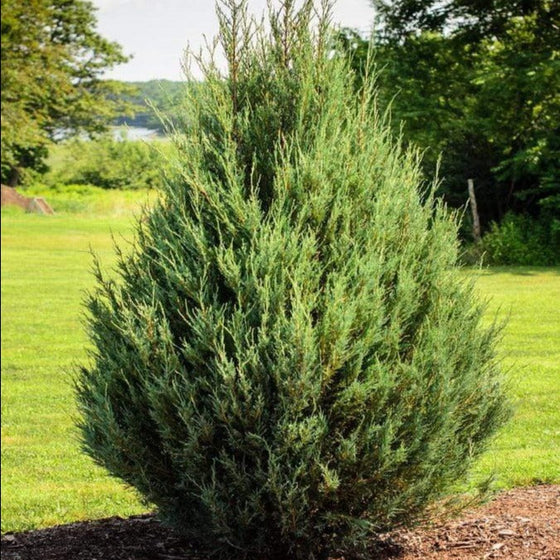
Images Depict Mature Plants
Eastern Red Cedar – Native Evergreen Tree for Privacy, Windbreaks, and Wildlife
A hardy native evergreen with timeless beauty.
The Eastern Red Cedar (Juniperus virginiana) is a true American classic—native, adaptable, and tough as nails. With its dense evergreen foliage and pyramidal shape, this cedar is a favorite for privacy plantings, windbreaks, and naturalized landscapes. Its bluish-green needles provide year-round color, while its rugged growth habit makes it one of the most dependable evergreens available.
Perfect for privacy, erosion control, and large properties.
Growing 30–50 feet tall and 10–20 feet wide, Eastern Red Cedar is often planted in rows to create solid evergreen hedges or long property borders. Its fibrous root system also makes it ideal for erosion control on slopes and fields, while its tolerance for poor soils makes it invaluable in difficult landscapes. Whether you need a privacy screen, windbreak, or large-scale planting, Eastern Red Cedar offers both form and function.
Drought-tolerant and low-maintenance.
Eastern Red Cedar thrives in full sun and well-drained soil, but it adapts to clay, sandy, and rocky ground with ease. Once established, it is highly drought-tolerant and requires only occasional watering during dry spells. Unlike more delicate evergreens, this cedar handles heat, cold, and urban conditions without complaint, making it one of the lowest-maintenance privacy trees you can grow.
Valuable for wildlife and landscapes.
In addition to its beauty and utility, Eastern Red Cedar provides food and shelter for birds and pollinators. Its small blue berries attract cedar waxwings, robins, and other songbirds, while its dense evergreen canopy offers year-round protection for wildlife. Planting Eastern Red Cedar means you’re not only investing in your property, but also supporting native ecosystems and biodiversity.
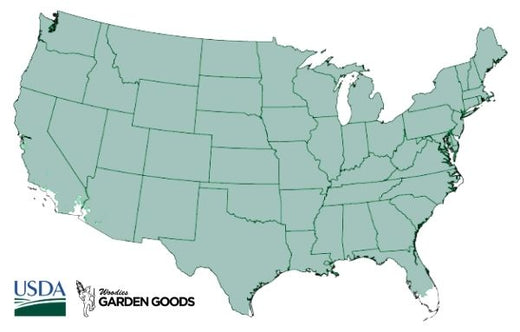
| Hardiness Zone: | 3-9 |
|---|---|
| Mature Height: | 40 to 50 Feet |
| Mature width: | 10 to 20 Feet |
| Classification: | Evergreen tree |
| Sunlight: | Full sun to part shade |
| Habit: | Upright, columnar |
| Foliage Color: | Blue green |
| Pruning Season: | Prune in late winter before new growth or after new growth hardens off in summer |
| Soil Condition: | Any well drained slightly acidic soil |
| Water Require: | Water well until established |
| Common Names: | Eastern Red Cedar, Red Cedar, Eastern redcedar, and Upright Juniper |
| Uses: | Tolerates heat, drought and salt Spray. Full sun brings out the best fall color. Will adapt to slightly moist sites |
How to Care for Eastern Red Cedar
After purchasing your Eastern Red Cedar, be sure to read the recommended care instructions to ensure your plant stays happy and healthy for years to come.
How do I plant Eastern Red Cedar trees?
Select a site with full sun and well-draining soil. Dig a hole twice as wide as the root ball but no deeper, and place the tree so the crown sits level with the soil surface. Backfill halfway, water thoroughly, then finish filling and water again. For hedges or windbreaks, space Eastern Red Cedars 8–12 feet apart, depending on how dense you want your screen. Finish by applying a 2–3 inch mulch layer to retain moisture and suppress weeds, keeping mulch away from the trunk to avoid rot.
How often should I water Eastern Red Cedar?
Water regularly during the first year to help establish a strong root system—about once a week, or more often in extreme heat or sandy soils. Ensure the soil dries slightly between waterings. Once established, Eastern Red Cedar is extremely drought-tolerant and thrives with little supplemental water. In fact, overwatering can cause problems, so deep, infrequent watering is best.
When and how should I fertilize Eastern Red Cedar?
Fertilize young trees in early spring with a balanced, slow-release evergreen fertilizer to encourage strong growth and healthy color. Spread evenly around the root zone and water well after application. Mature trees typically require minimal fertilization once established, though a spring feeding can help boost vigor in poor soils.

Does Eastern Red Cedar need pruning?
Eastern Red Cedar naturally forms a pyramidal evergreen shape and usually requires little or no pruning. Remove dead, broken, or crossing branches as needed in late winter or early spring. If planting as a hedge or windbreak, light shaping may be done to maintain uniformity, but heavy pruning into old wood should be avoided.

